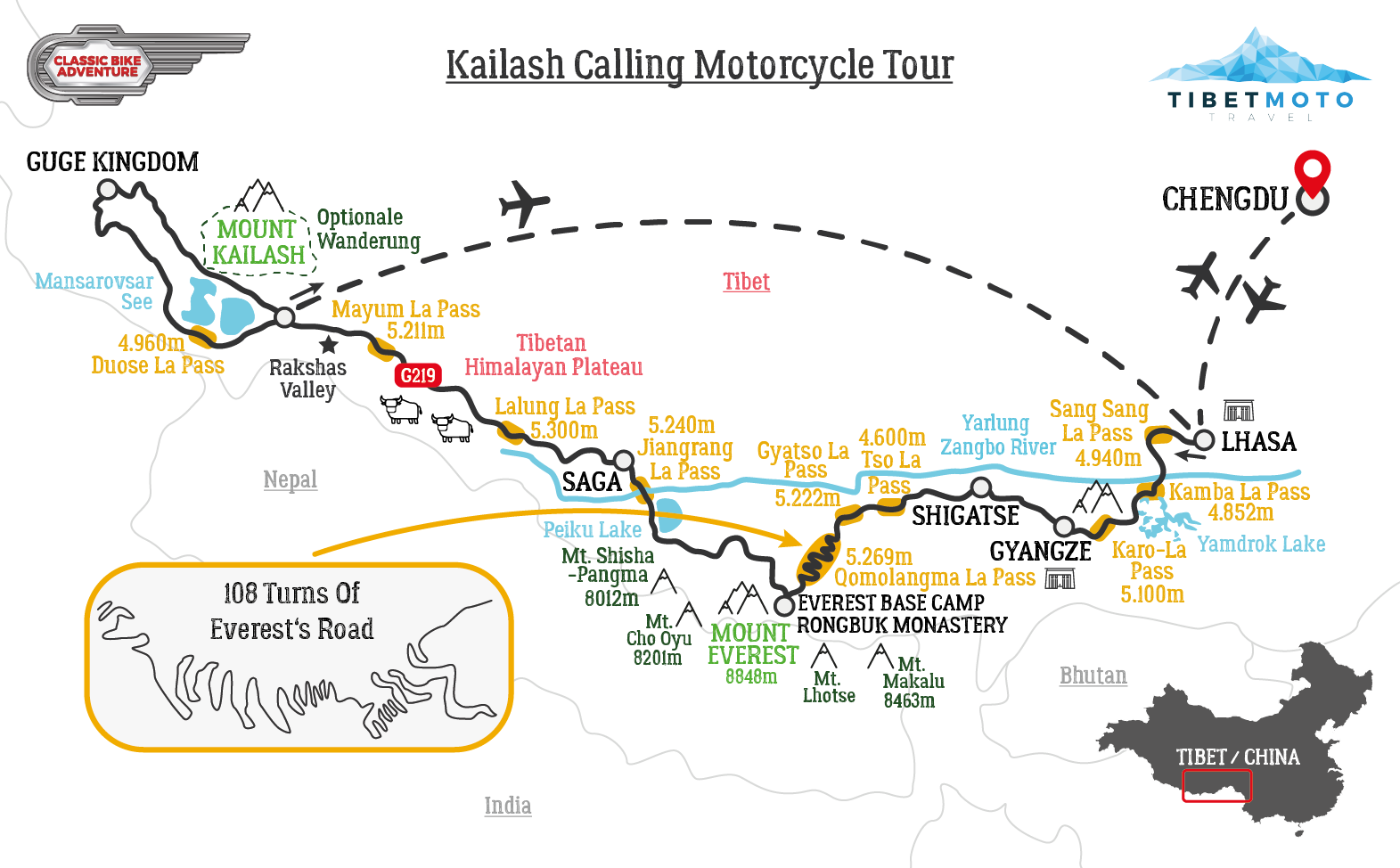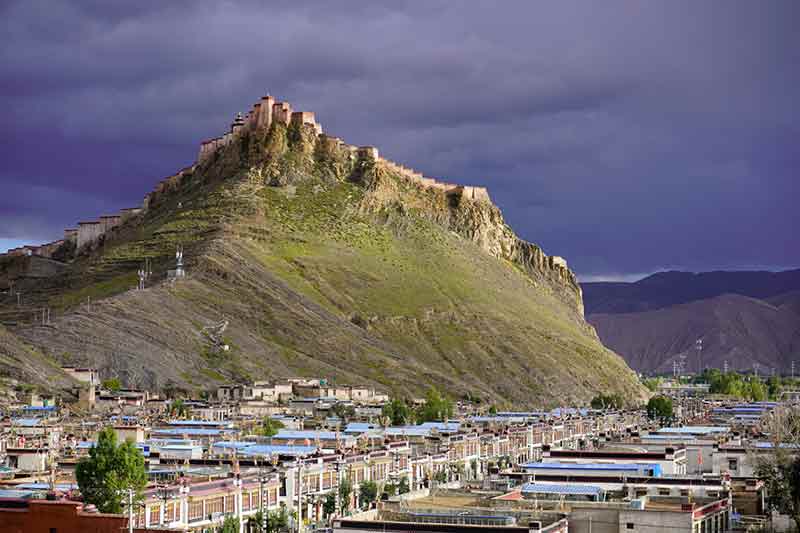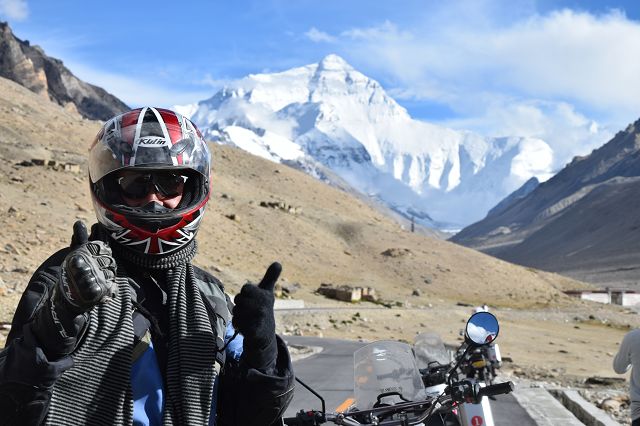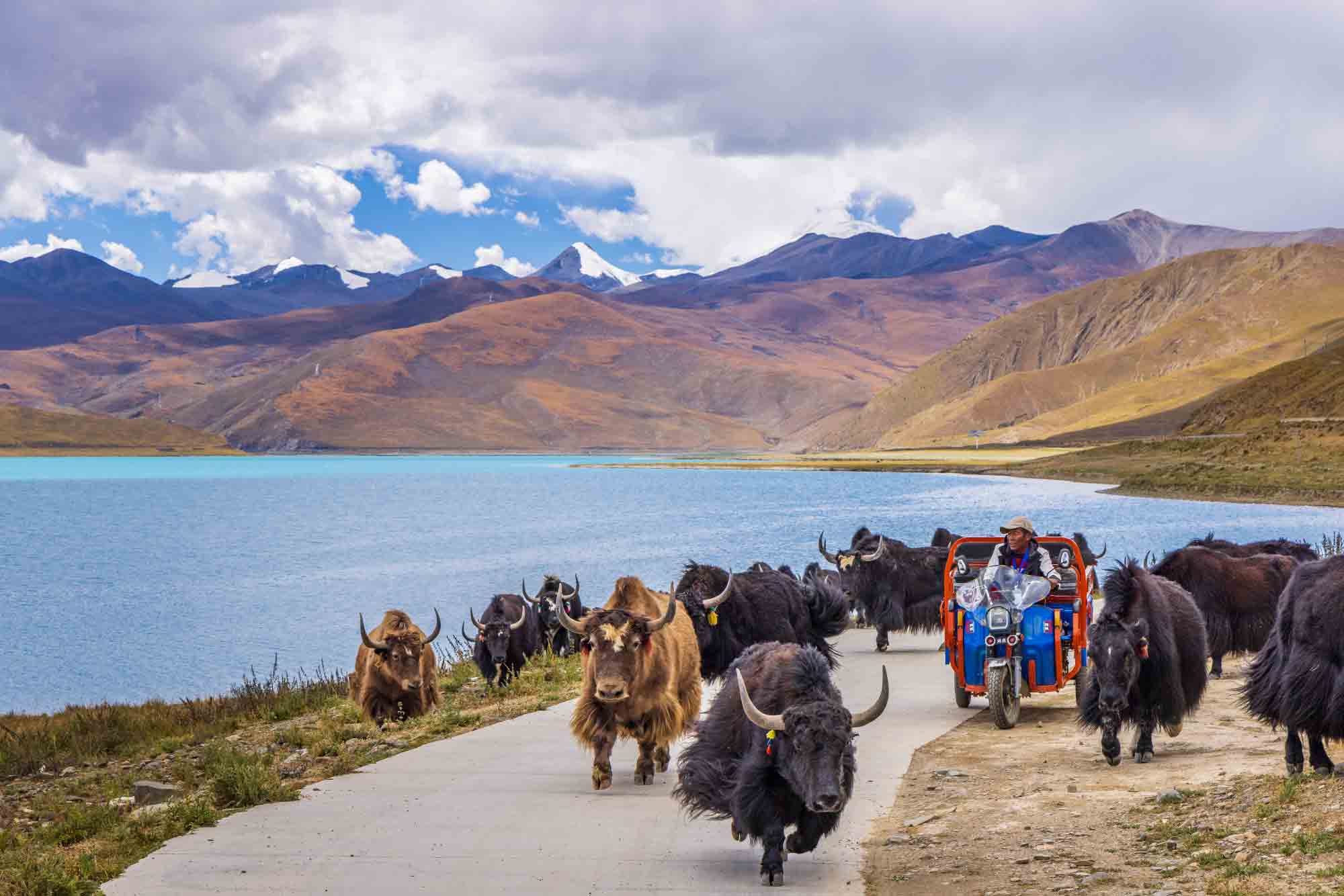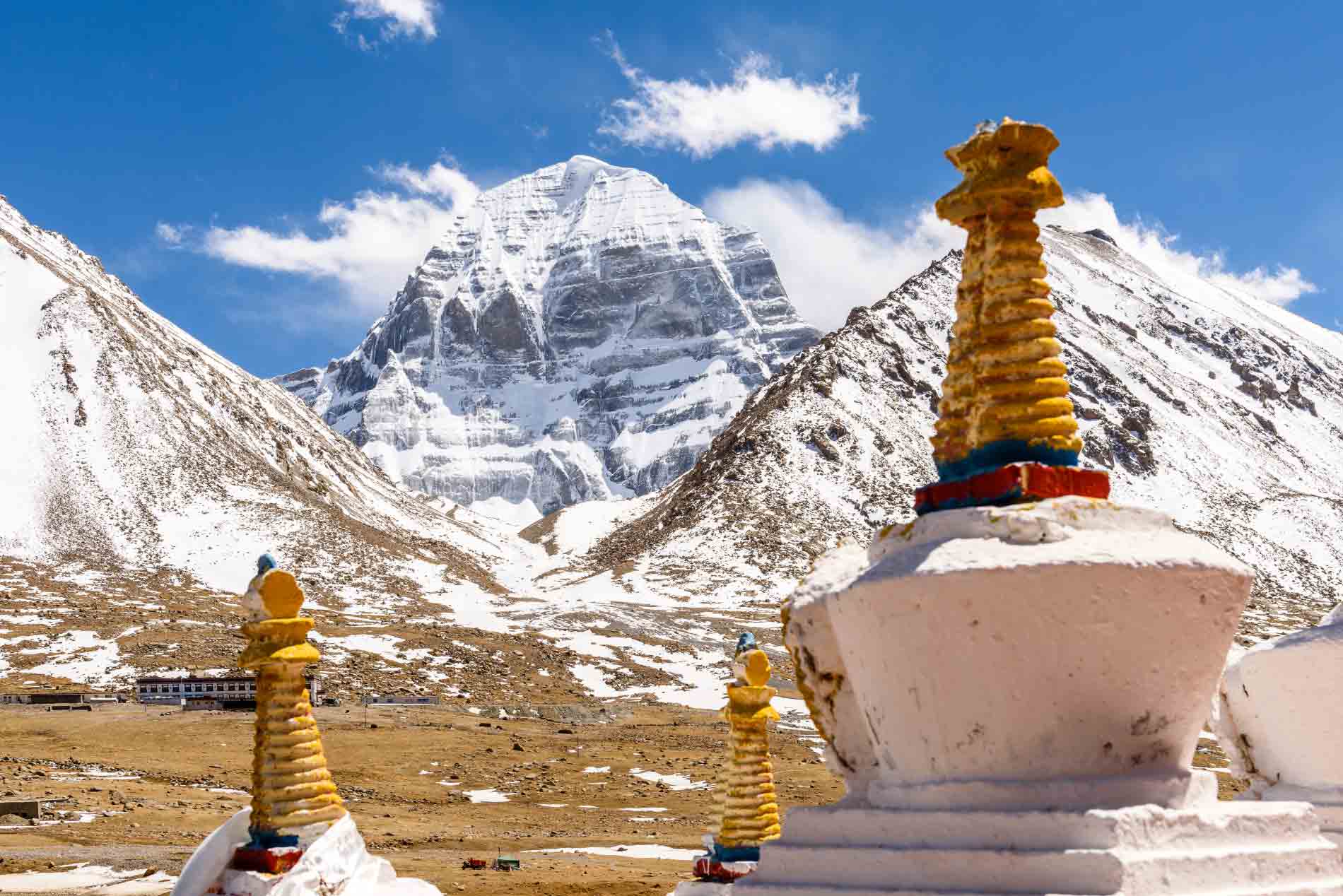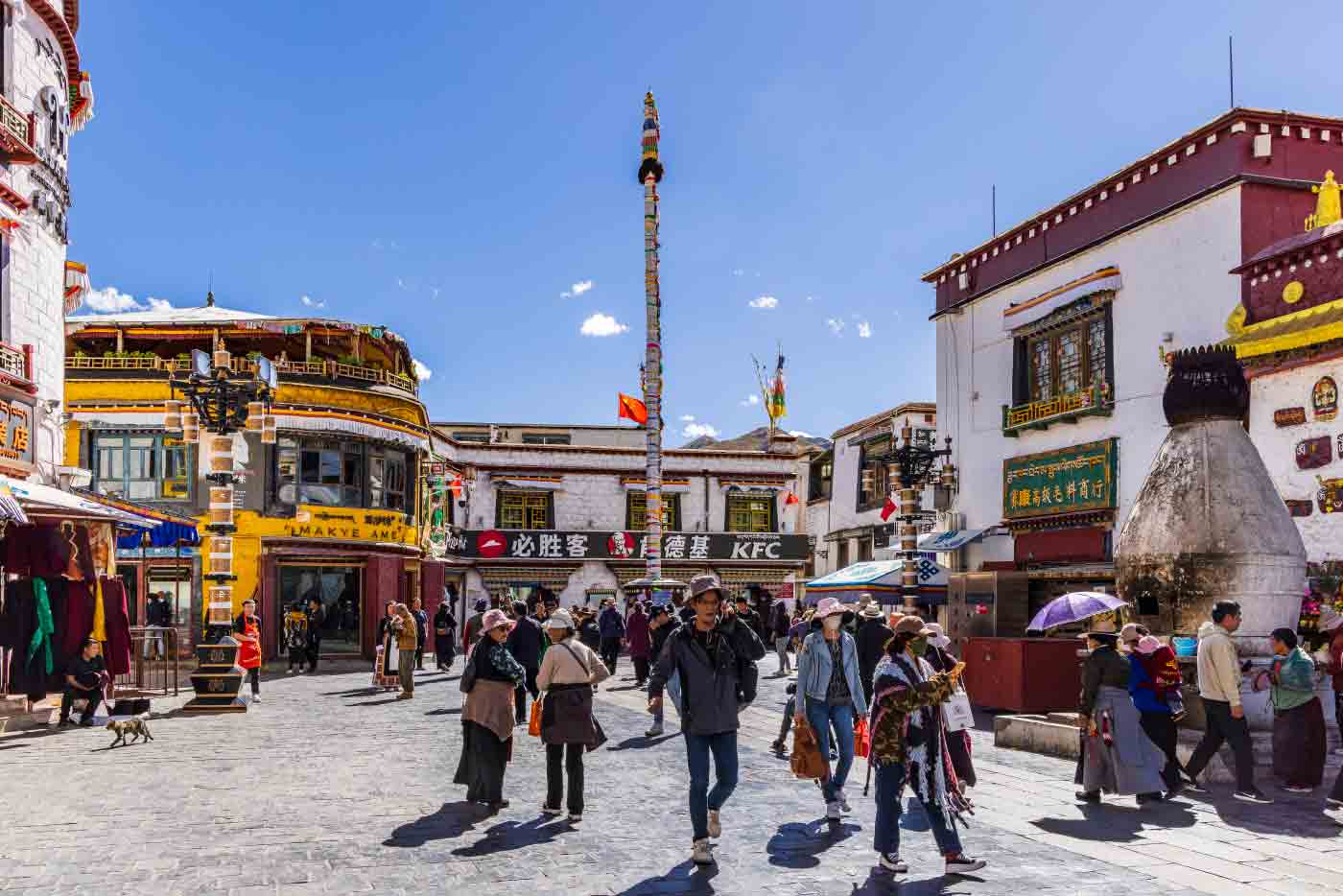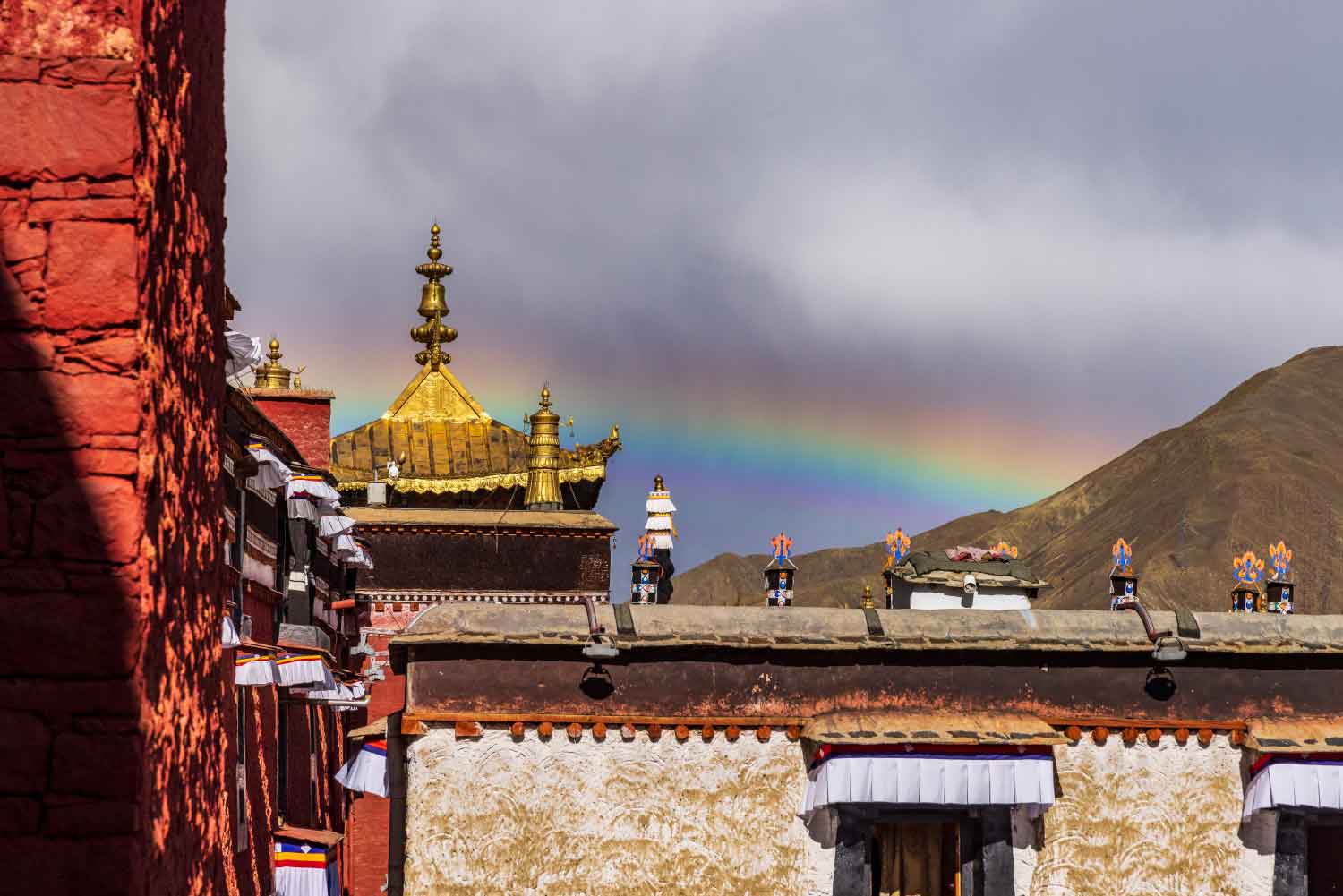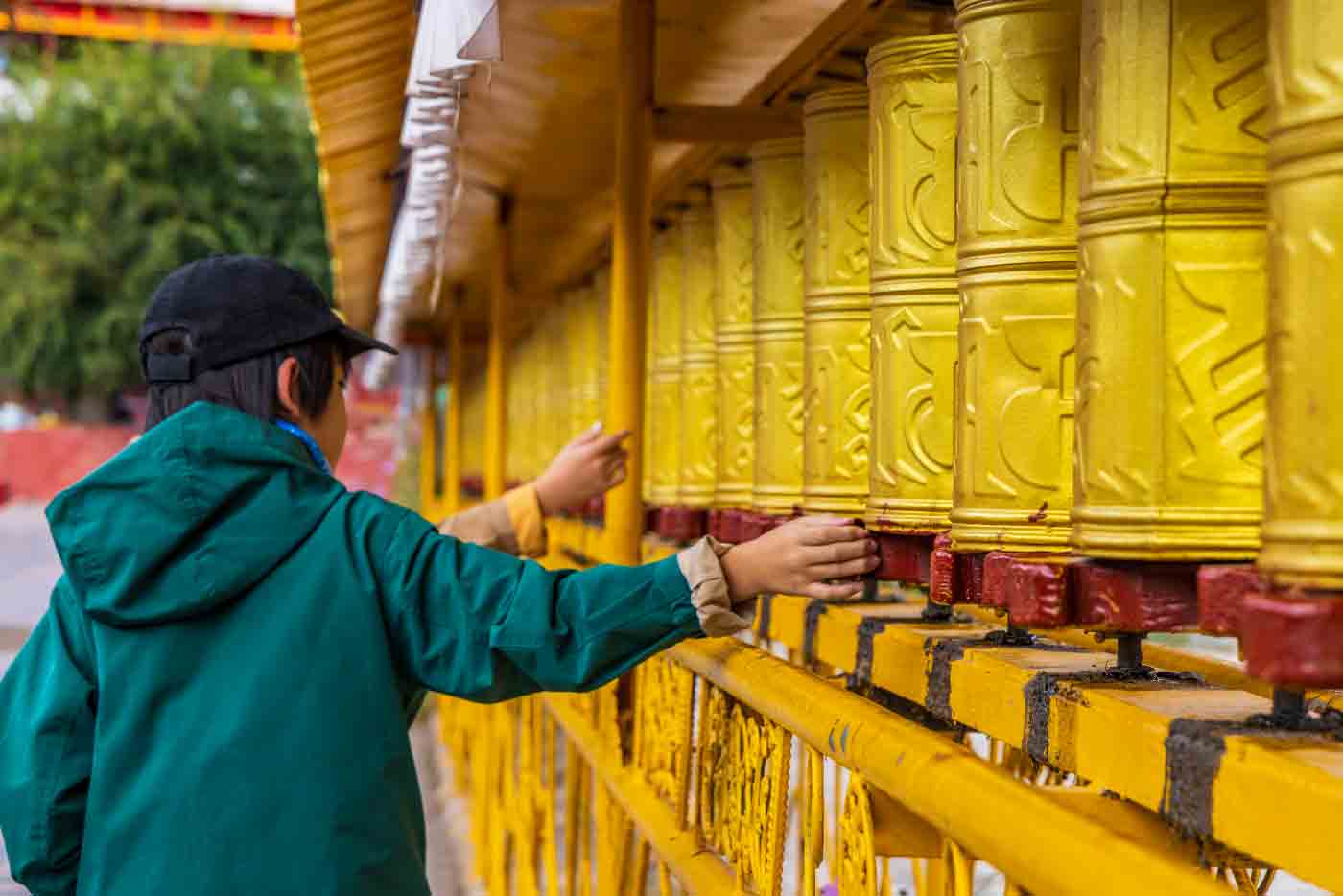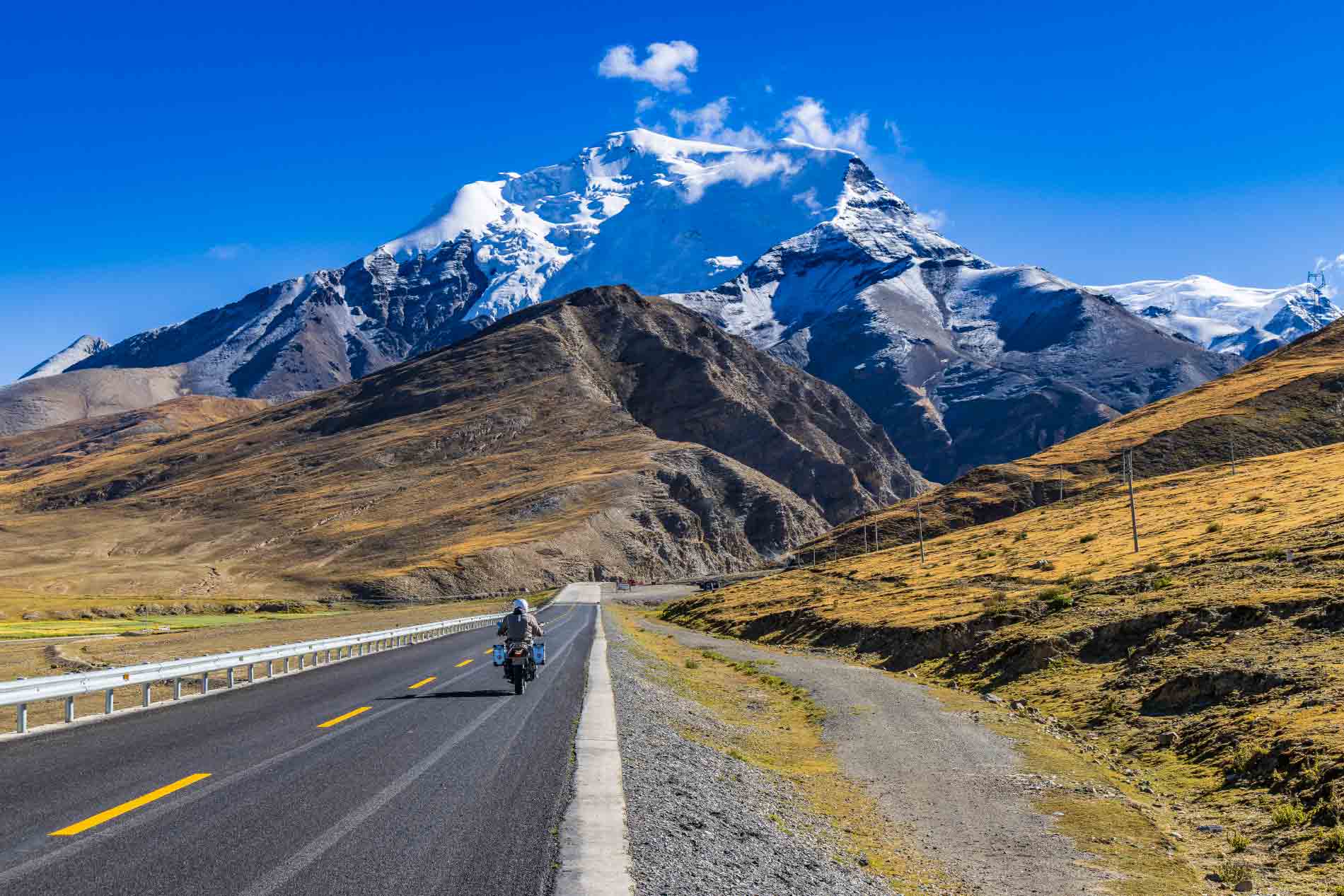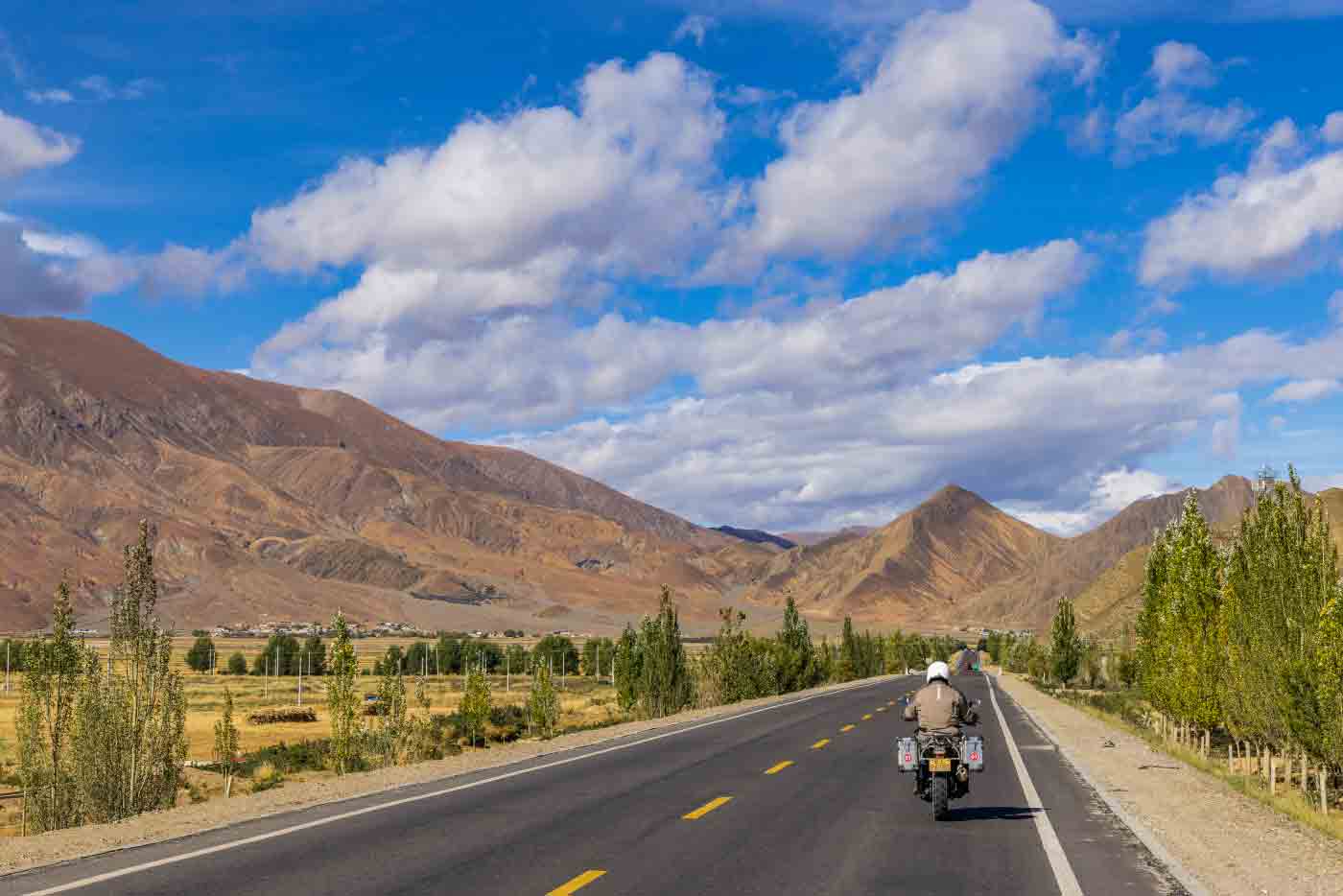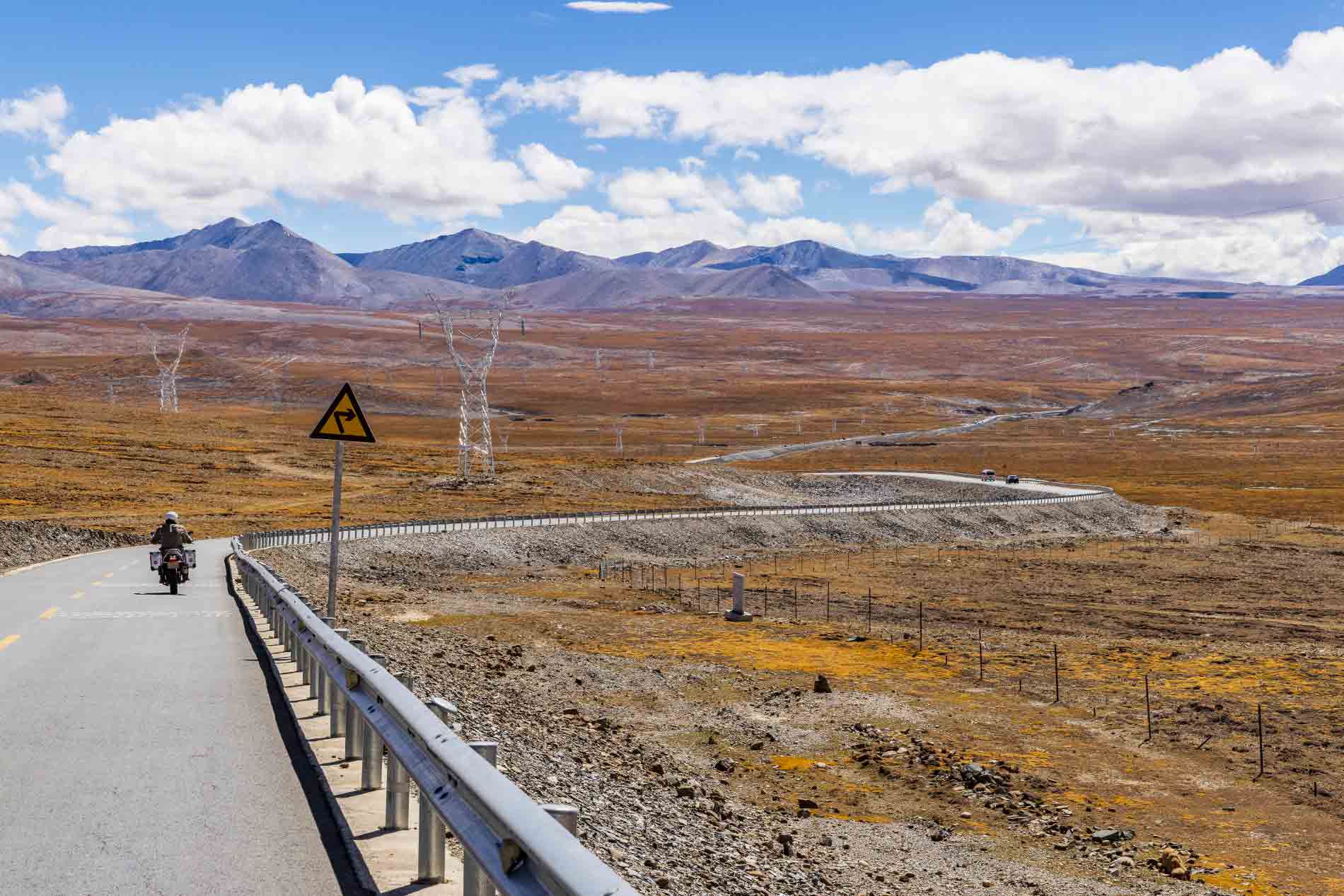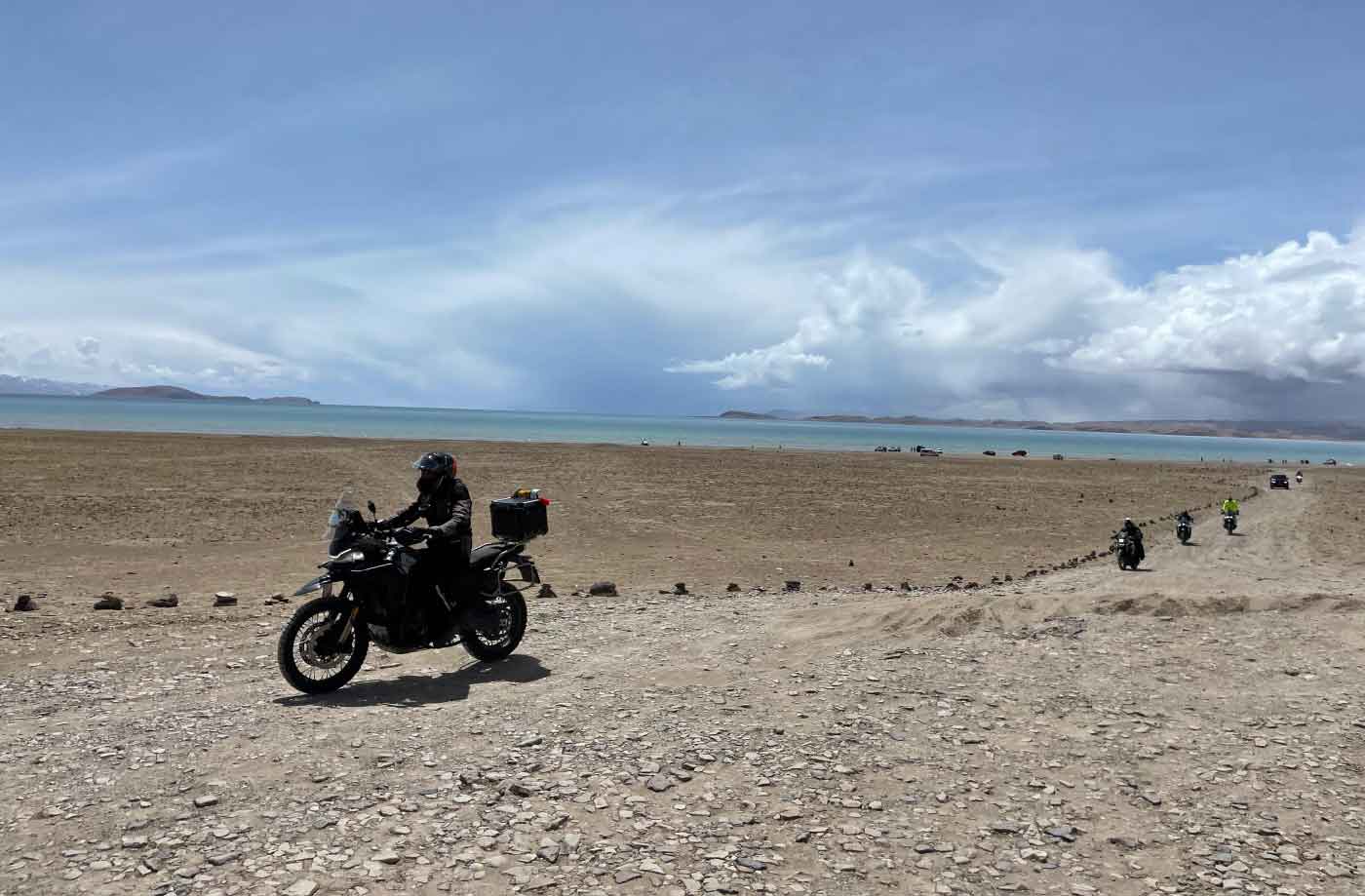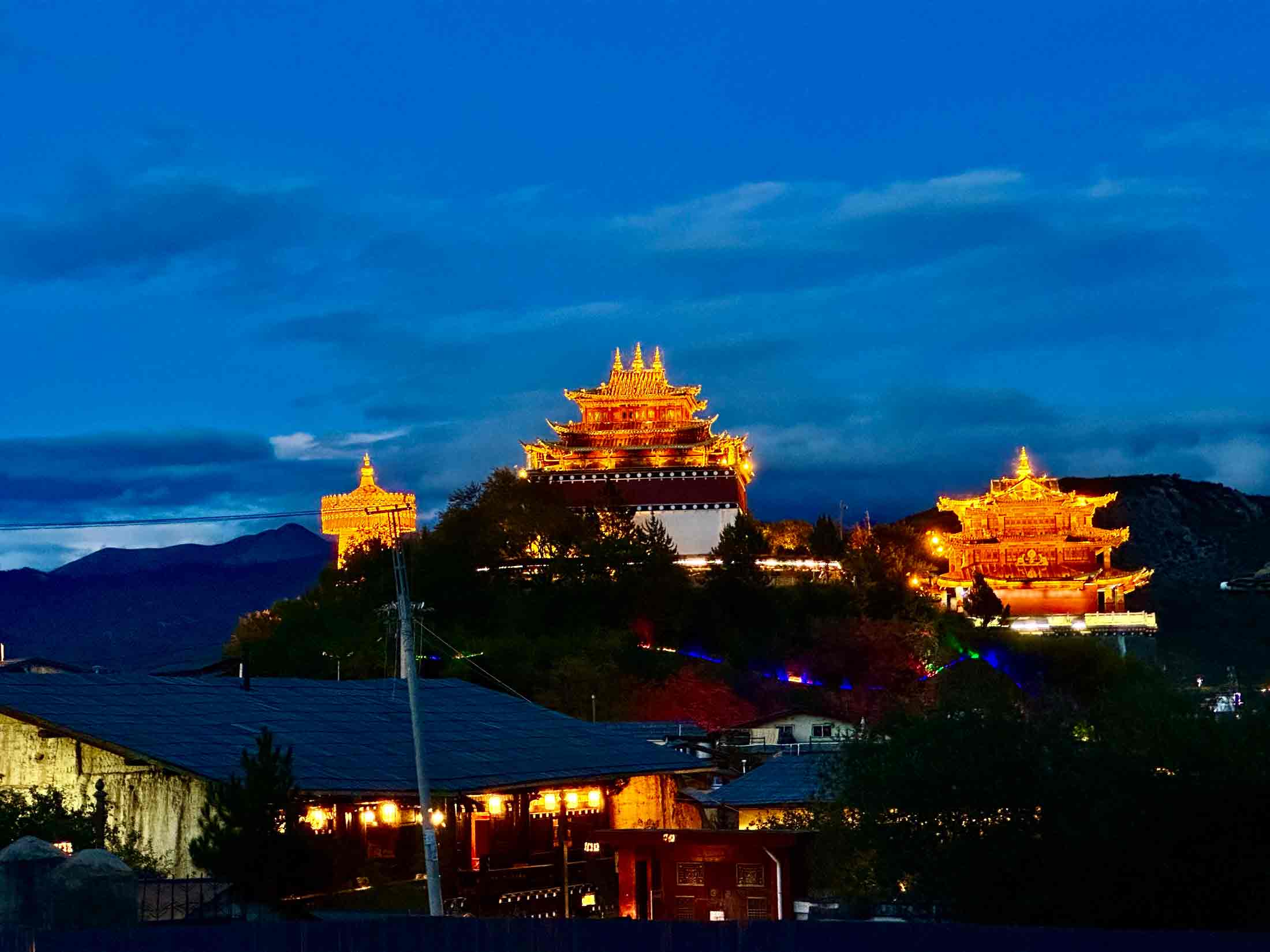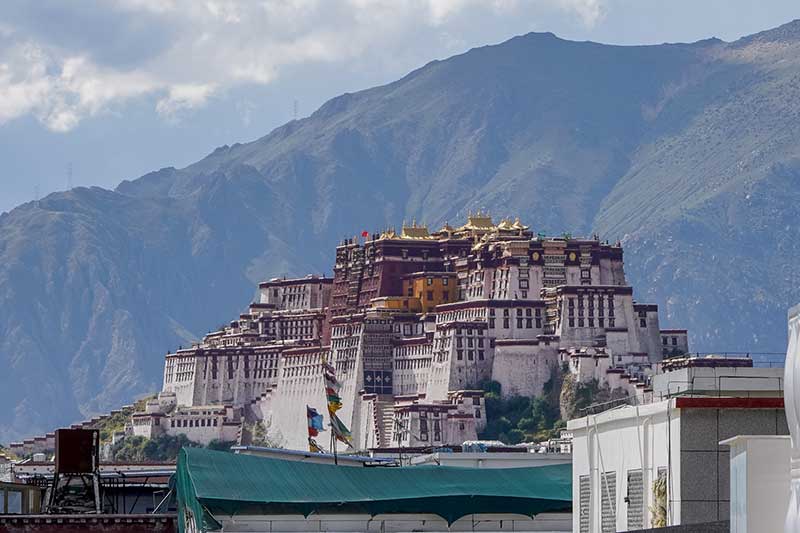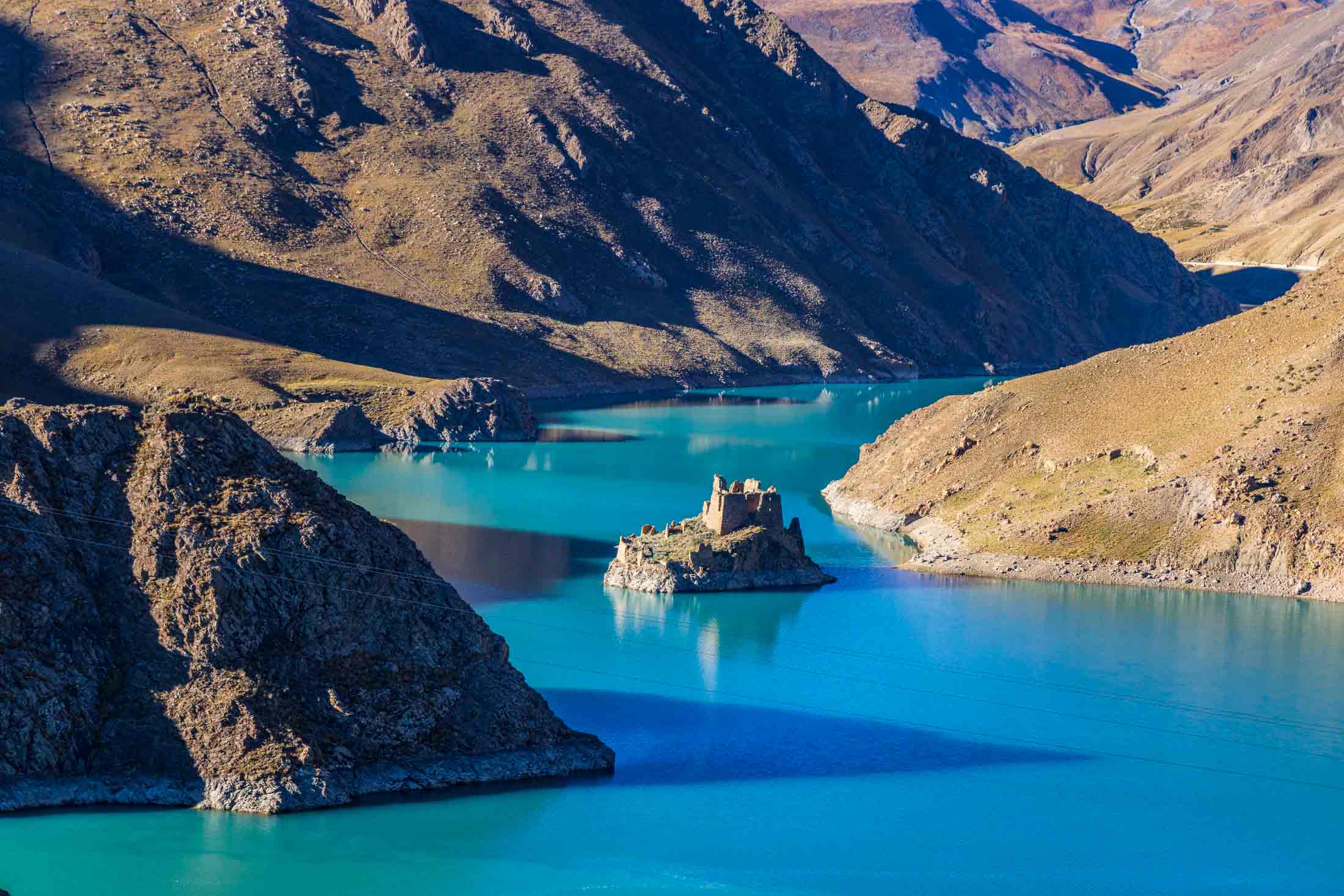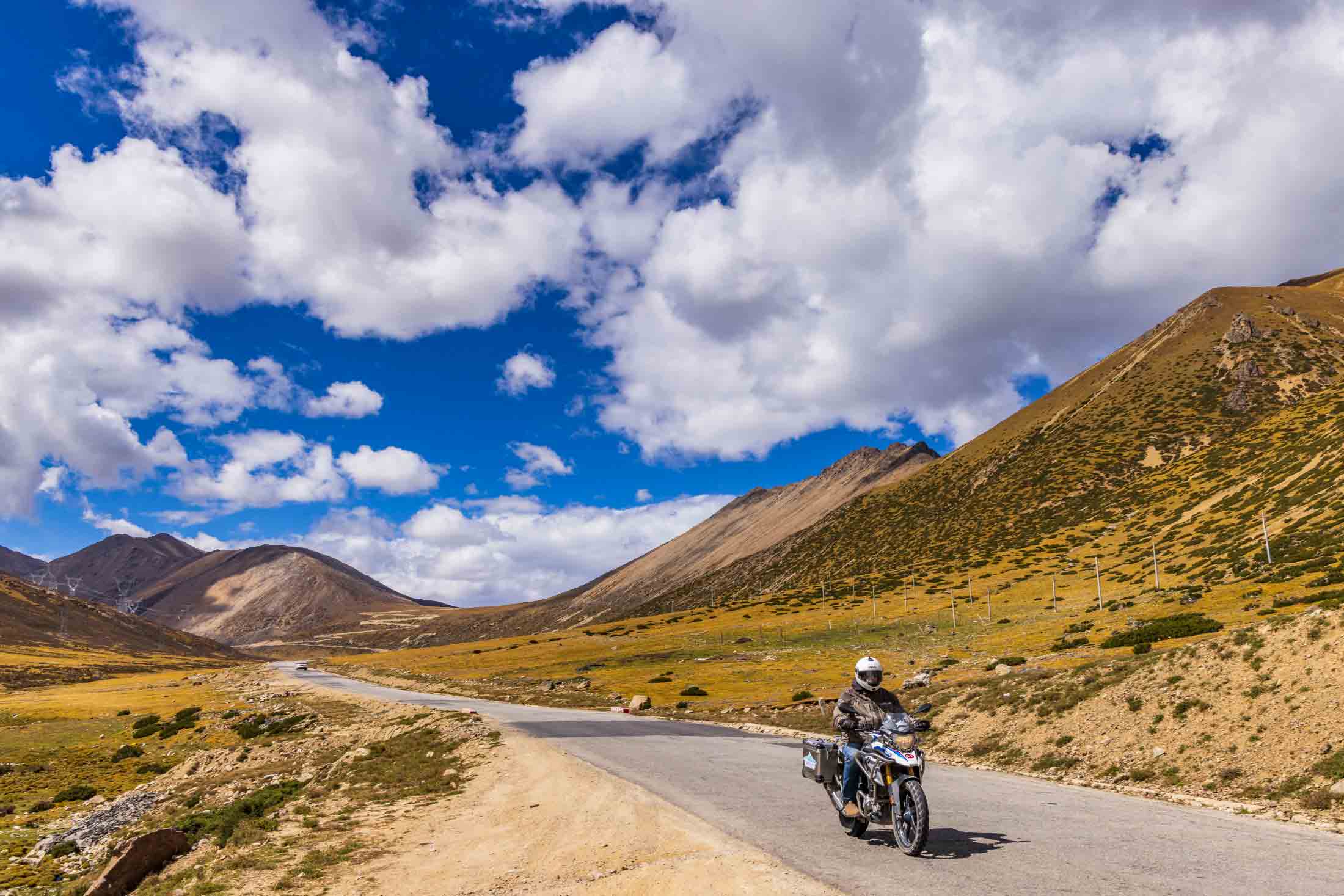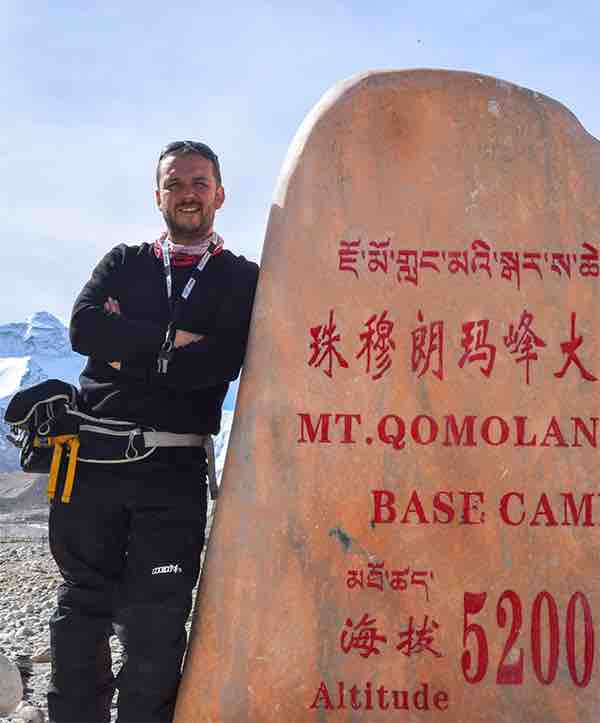


Kailash Calling Tour Motorbike Adventure
This Tibet motorcycle tour is one of the most spectacular routes in the Himalayas – a journey to the holiest sites, over the highest passes and through the loneliest landscapes on earth. From the historic capital Lhasa with the world-famous Potala Palace and the Jokhang Temple, we start our journey through the highlands of Tibet. Over winding roads and panoramic passes, you will travel along the turquoise blue Yamdrok Lake and on to Gyangze and Shigatse – with visits to impressive monasteries such as Tashilhunpo and Pelkhor. A highlight of the tour is the ascent to Everest Base Camp, which we reach via a breathtaking serpentine road with a view of several eight-thousanders. We spend the night directly at the Rongbuk Monastery with a view of the highest mountain in the world. It gets even more remote on the way to the holy lake Manasarovar and Mount Kailash, which is considered the center of the world for millions of pilgrims.
Read more
Afterwards we follow remote roads further west to the abandoned kingdom of Guge, where we explore the ancient ruins of Tsaparang and the monastery of Tholing. On the way back, an alternative route awaits us over lonely high plateaus, rugged gorges and small villages – with rides over several passes over 5,000 meters high. If you wish, you can take part in the three-day optional Kailash hiking circuit (Kora) on foot – a spiritual experience in the midst of untouched nature. This trip is an extraordinary combination of adventure, culture, scenic diversity and unique, spiritual places – ideal for motorcyclists who not only want to cross Tibet, but also experience it with all their senses.
The Mt. Everest …
… was incredible! Also the way there with its endless curves was great. Exploring Tibet on a motorcycle is one of my most beautiful adventures that I have experienced so far.
Lhasa is …
… an incredible city. The Dalai Lama’s residence is impressive. But the roads are great too. The bikes run flawlessly and we were able to embark on a new adventure every day. Thank you Tibetmoto Tours for the good organization.
Our guides …
… showed us the most beautiful places in Tibet. The ride to Mt. Everest with its many winding roads was one of my highlights on the tour. I can only warmly recommend the tour to everyone who would like to get to know a country on a motorcycle!
Special open group tour date
2026
26.04. – 09.05.
With Hiking Extension
26.04. – 12.05.
2027
25.04. – 08.05.
CF Moto 450 MT: 5.990€
CF Moto 800 MT: 6.490€
Passenger: 4.490€
Single Room Surcharge: +690€
Hiking Extension (Min. 4 Participants): +590€
Single Room: +90€
14 days / 13 nights / 10 driving days
With Extension
17 days / 16 nights / 10 driving days
Overnight stays in selected mid-range hotels and guesthouses. In Lhasa, Shigatse and on Everest local 4* hotels. 3 nights in simple accommodation. Bathrooms always en-suite.
Tibetmoto …
… has once again surpassed itself with the tour. The ride over high passes with wide views and along fast rivers to azure blue salt lakes was AWESOME. Tibet is a beautiful country that is made for motorcycle tours. Thank you Tibetmoto for the great tour.
The tour …
… was great. We had one great day after another and enjoyed every single minute. Tibetmoto Tours knows what they are doing!
Nice Tour
The organization in advance ran smoothly. The tour was well planned and the guides were very experienced.
Kailash Kora – 3-Days-Overview
Questions & Answers
All our itineraries give you a good overview what you will experience and discover when booking with tibetmoto. The itineraries are nevertheless best understood if they are seen as a suggestion rather than as a 100% planned and a thousand times done way of traveling. We like to keep every tour, every adventure, every trip unique and special. We are proud to say that we have never done a trip two times exactly the same way. Our team does not like to offer mainstream tourism tours, and we believe that people enjoy their time best when they have freedom and possibilities to choose from. Freedom and flexibility are very good ingredients to cook an exceptional discovery or adventure, to meet unusual people and visit off-the-beaten-track places.
After arriving at the camp ground we pitch up the tents, our team will set up the mobile kitchen, the electricity generator is being started and we can think of having a cold beer. All supplies and the luggage is carried by our supply truck. We do not have always pre-chosen camp grounds which are always frequented by us, since every expedition is different. Depending on the time in the afternoon we start looking for “the perfect spot”. Perfect spots have a water source such as a river or a lake and a flat piece of land for the tents. Some spots we use more frequently since they are so perfect that the location is hard to beat. Camping together with nomads offers an opportunity to experience their way of live, culture and habits. Sitting in the evening together in a nomad tent somewhere on the Tibetan grassland and listening to Tibetan nomads` songs is a truly genuine experience.
Dinner is being served in a large dining tent where we have tables and chairs to comfortably sit together, eat and drink. The separate, smaller, sleeping tents are designed to accommodate each two people, but if you choose the “single room” option (you will find that option below each expedition itinerary) you will have your own tent. Our tents are army tents where you can almost stand upright. The sleeping “hard wear” is a foldable army field bed, which puts your body about knee height away from the ground. We provide you with the entire hard wear, plus blankets and insulation mats. The only item you should bring along is your personal sleeping bag. If you don´t want to bring your sleeping bag all the way to China we can provide you with a new sleeping bag for a reasonable price.
The hotels in which you stay have a decent, but typical three to four star standard. All rooms have a private bathroom, with the exception of the Rongbuk Monastery.
Vaccinations are not required for the Tibet Motorcycle Tour.
Oxygen:
Starting from Lhasa we will provide medical oxygen. This can support a person with oxygen for up to 24 hours. Before starting the Tibet Motorcycle Tour, you should also contact a doctor who will prescribe a Diamox. Diamox is a drug that can be taken prophylactically against altitude problems. As a result, groups that take Diamox hardly or not at all experience altitude-related symptoms. For a smooth running of the Tibet Motorcycle Tour, the personal health and well-being of each participant is important. We therefore strongly recommend that you consider taking Diamox.
You will need your passport, a pass picture, national driving license, international driving license and flight ticket. Please be sure to make photocopies of all of your important travel documents and carry them separately. They can be invaluable in an emergency.
We also need a scan of the Chinese visa six weeks before the tour starts.
All scanned documents should be sent to us on an A4 sheet of original size
A home stay is an opportunity to get access into another culture by joining the host family for dinner and breakfast and sleep under their roof, as their guest. Most families live together in a several generation house, from children to old grandparents. A lot of home stays are semi-farms with at least a few cattle such as chicken and cows around the house. Often are fields attached where family member go to work after breakfast. Here, local family and work life can be experienced as it is instead of “only” observing it from the outside.
We believe that joining a home stay is on of the best ways to get in touch which what surrounds you in a foreign country.
For the Tibet and China motorcycle tour you need a valid national and international driver’s license.
In China, the currency is the CNY (Chinese Renminbi). The exchange rate is around 1€ to 7.56 CNY (as of 05/2020). The CNY is not a freely convertible currency, so you cannot get it at every bank in Europe. The exchange rate, which is determined by the Bank of China, can be observed under the following link: http://www.boc.cn/sourcedb/whpj/enindex.html
However, we recommend withdrawing a larger amount of CNY from an ATM with all major credit cards or debit cards after arriving in China. Our on-site tour guide is happy to help. Due to the often very poor exchange rate for the CNY in Europe, it is not worthwhile to exchange significant amounts of CNY in Europe. There are also many ATMs in Lhasa where you can withdraw money. Our experience shows that the majority of our participants spend around 20€ a day.
The luggage will be transported in the support vehicle. Don’t forget that on domestic flights, the pastries usually cannot exceed 20 kg!
For a motorcycle tour you should bring motorcycle clothing including a helmet. Of course you also should pack warm clothing (as layers or as undersuit). It can get cold! You should also bring gloves and a rain suit.
The roads on the motorcycle tour are mostly paved (with a few exceptions). Due to the new asphalting of road sections, it can temporarily lead to a poor condition of the road. The paved roads are mostly in good condition. However, there may be isolated potholes or gravel lying on the ground. The route on the motorcycle tour also includes sections with new asphalt, on which you can enjoy European standards or even better. These routes are wonderful to ride! Due to moisture and the difficult to see oil or diesel traces, however, extreme caution is always required!
Deposit for a rental motorcycle (partial cover):
The following cash deposits are required:
Shineray X5 400: EUR 500
BMW G 310 GS: EUR 1,000
BMW F 800 GS: EUR 1,500
If the participant/motorcyclist causes damage during the Tibet motorcycle tour, the deposit is the maximum amount.
Entry/Visa:
Many nationalities can enter China visa free for up to 15 days. Those include:
Germany, France, Italy, The Netherlands, Spain, Malaysia, Switzerland, Ireland, Hungary, Austria, Belgium, Luxembourg, New Zealand, Australia, Poland.
Your passport must be valid for at least 6 months. Some other nationalities need a visa to enter China.
Should the duration of the stay exceed 15 days, you must apply for the visa yourself or hire an agency to do so. Due to frequent changes in the application procedure, we recommend using an agency. Although you can apply for the visa yourself, it is only slightly more expensive to hire an agency and often saves a lot of work. The visa for China costs approximately EUR 300. More detailed information on the visa can be found in a specific appendix after booking upon request.

